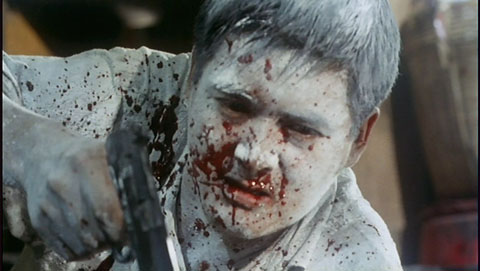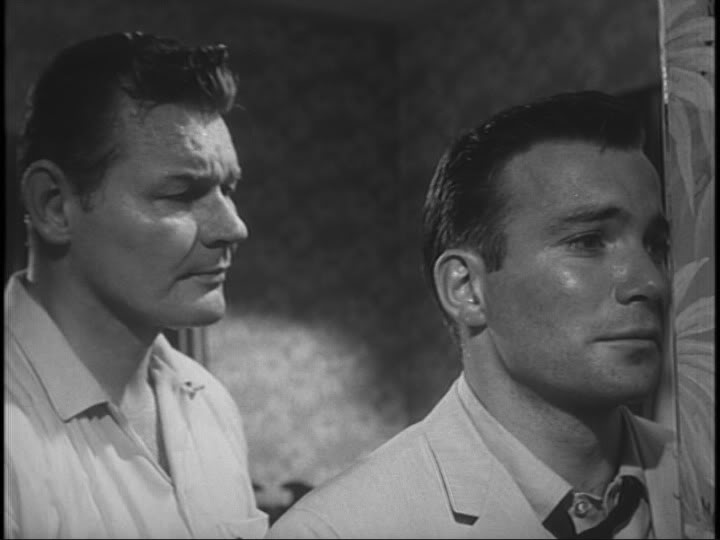On Craft

Roger Corman’s The Intruder
During an interview I shot with him a few years ago, Roger Corman imparted a few words of wisdom on filmmaking that I’ll never forget. Prompted by the question: “Is film an art or a craft?” Roger responded, “Film is a craft. But done well, it can become art.”
If you think for a moment about any commercial collaborative production, his logic obviously correct. Any skyscraper, no matter how generic, is crafted by many talented individuals from the architect down to the bricklayer. But, with the right combination of skills, working perfectly in tandem, this skyscraper could turn out to be the Empire State Building. Or the Notre Dame de Paris. The sum of these parts doesn’t always equal majesty, but it CAN.
So what’s the difference between “craft” and “art,” exactly? What makes something art? Where’s the line, and what determines it?
While “artist” was originally a blanket term referring to a person skilled at any one of a number of muse-inspired pursuits (including history and astronomy), the contemporary English language delineates a hierarchy between highbrow “art” and lowbrow “craft”. Art is an internal, personal expression, created for the artist; craft is an external, commercial expression, created for the consumer. Art is not a job. Craft is. And so craft, time-honored for hundreds of years, has become a dirty word in comfortable first-world society, the only time in history where the luxury of creating art for art’s sake is not only a possibility, it’s encouraged.
In today’s society, and under Corman’s hypothesis, “craft” is elevated to “art”, when a piece of created material stirs emotions emotions–by compelling narrative elements, awe-inspiring precision, or unique execution. In this way, a provocative ad campaign could be art. Or a vividly described travelogue. A piece of mid-century furniture. Swamp Diamonds might not be art, but The Intruder is.

Is this Amnesty International ad campaign “art”?
Ironically, though the “craft” label is often applied negatively to commercial artwork (work that is, somehow, diluted in value merely because it’s accessible), previous to the 20th century, all art of historical value was created by those who would identify themselves as craftsmen, from the ancient Egyptian sarcophagi to Théophile Steinlen’s poster for Le Chat Noir.
Old Masters weren’t master artists creating for the sake of creating; they were master craftsmen, trained and skilled in a commercial trade and patronized by the wealthy and powerful. (Predominantly) men who riffed on and critiqued each others’ work to improve their own. These were sculptors who desiccated human bodies to learn each muscle and its purpose, painters who made studies of every inch of their subject before committing to a final portrait. It was a consummate knowledge of and dedication to their CRAFT that allowed them to become the demigods of ART we revere today. They knew their shit, and they were paid to know it.
But over the centuries since Michelangelo spent 5 years painting the Sistine Chapel for a mere 3,200 ducats (a modern equivalent of $90,000 annually, about the same as the IT guy at your office), a misconception has risen to popularity that denotes a “true artist” as an auteur who creates in a vacuum, alone, cut off from economic corruption. We think of Emily Dickinson, Henry Thoreau, Vicent Van Gogh. Howard Roark. We value the “self-taught,” the “mad at the academy” over the learned. We degrade the passing on of artistic knowledge with the phrase “those who can’t, teach” and ignore the fact that Leonardo Da Vinci, Raphael, and Michelangelo all had pupils and apprenticed themselves. We worship the archetype of the starving yet out-to-lunch dreamer as artistic martyr. We conveniently forget, while watching Paul Schafer’s Amadeus, that Mozart, when composing himself to death, was simply an employee of the court.
Because of the broad range of skills needed to make films, being a successful director often has more to do with craft that with art. Roger Corman knows what his audience wants and has crafted films to fulfill those needs for half a century. Even the most “artistic” auteurs are patronized by producers, studios, distributors; Godard and Haneke know what’s expected from their films, and they fulfill that expectation in order to continue making movies. As much as “independent” filmmakers can be revered for innovation or going against the mainstream, they’re still crafting a product to be consumed, and there’s someone paying for that craft. Like it or not, even a subversive film like A Clockwork Orange inevitably starts with the title “Warner Bros. Presents.”
So what is a motion picture craftsman?

The anxious protagonists of Brief Encounter
David Lean, the most acclaimed film director of all time, is known today for his epics. But he began his career in the editing room, studying and cutting more than twenty films before stepping on his own set. In the words of Robert Bolt’s screenplay of Lawrence of Arabia, “big things have small beginnings.” Or more simply put, everyone’s gotta start somewhere–and it takes effort and skill to surmount that somewhere. It takes craft.
Lean made a dozen low-budget features including Brief Encounter (voted 2nd best British Film of all time by the BFI) before he won his first bucket of Oscars for Bridge on the River Kwai. By 1957, Lean was an undisputed commercial maestro, able to lead an orchestra of thousands of individuals into cinematic harmony, creating unforgettable films that still inspire awe after half a century. Art, paid for by the studios.
But Lean’s disciples–Lucas, Spielberg, Coppola, Cameron among them–have been called hacks and sellouts and worse for straddling the line between art and craft, responsible for the most commercially successful and emotionally resonant films of the past 40 years using a Lean-brand mixture of heroism, sentimentality, and magical realism.
John Woo is perhaps my favorite Lean disciple, a great director that’s often overlooked as solely commercial and therefore unimportant. But whenever I think of which director I’d most like to work with if given the chance, his name always comes out on top, because there’s so much skill to absorb from his work.
If you’re not familiar with his background: Woo started his career directing romantic comedies, building his reputation until he was able to transition into B-grade Vietnam War flicks and, ultimately, combine his love of Lean, Melville, and the Peking Opera into the consummate works of the “heroic bloodshed” sub-genre of action films, A Better Tomorrow, The Killer, and Hard Boiled. Masterpieces of choreography, camerawork, and pyrotechnics, Woo’s most well-known films are equal parts character piece and adrenaline-pumping action, a delicate balance lost on perhaps all younger action directors save Quentin Tarantino. Woo’s films usually revolve around the conflict between family, moral codes, and crime, and his action-packed direction and visual imagery heightens the emotional themes he explores.

The opening gunfight in Hard Boiled
It takes unbelievable, extraordinary skill to create a film like Red Cliff, Woo’s 2010 historical epic. Commanding thousands of extras in intricate battle sequences on land and sea, Woo created real-life visuals as technically stunning as Lawrence of Arabia or Spartacus, without the aid of drag-and-drop VFX armies. Red Cliff feels real because it is, and it connects emotionally with its audience because people watching the film, believe what they’re seeing. Cementing that emotional connection between the audience and the story they’re watching on screen is the most important skill of the motion picture craftsman, and it’s the culmination of that skill that determines whether or not a filmmaker can truly be called an artist.

A breathtaking scene in The Intruder
Today at Comic-Con, I was lucky enough to attend a panel featuring Corman and William Shatner, where they talked at length about their great film The Intruder, Shatner’s on-screen debut. Asked by the moderator, Kevin Smith, about his filmmaking career, Corman cited Ingmar Bergman: if given the choice of any profession, Bergman wished to be a craftsman working on a cathedral in the middle ages. To do work that was creatively fulfilling and allowed him to build something great.
Commercial films are our modern cathedrals, cultural milestones made by talented craftsmen to be enjoyed by audiences in perpetuity. They deserve to be art. Lucas, Spielberg, Lean, Woo, and Corman have shown us that they can be. Like it or not, this cabal of post-modern pioneers, the damn talented employees of the modern corporate court, are our new Old Masters. We can learn a lot from them. And if we learn enough, maybe we too can become artists.





